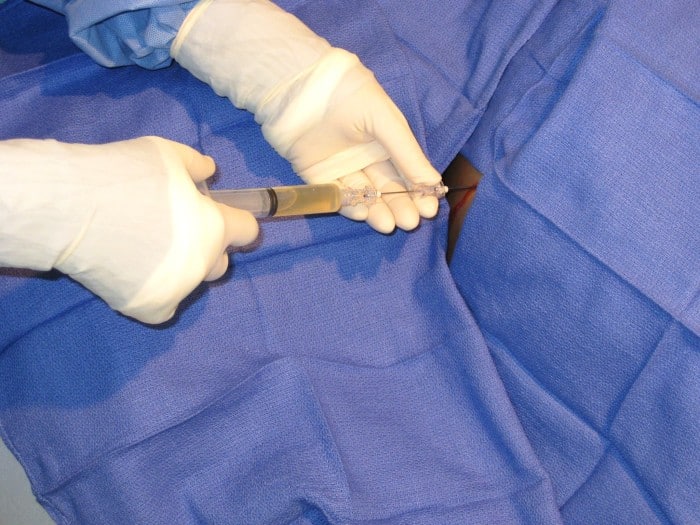
Typically associated with an increase in sinusoidal hydrostatic pressure, refractory ascites is difficult to resolve with standard medical care. It recurs despite repeated medications and treatment, which can severely impact the patient’s health, well-being, quality of life, and life expectancy.
Now that we have a basic understanding of what refractory ascites is, let’s go a little deeper by exploring their diagnostic criteria, clinical impact and treatments, as well as how they form.
What Are Refractory Ascites’ Diagnostic Criteria?
Refractory ascites prevail in 5% to 10% of patients who have ascites due to severe liver damage. How long can you live with ascites? Refractory ascites’ life expectancy among patients is 50% within the six to 12-month period after diagnosis. Owing to its mortality rates, proper diagnosis and prompt management are crucial.
Here are the diagnostic criteria for refractory ascites:
- Persistence of ascitic fluid
- Lower levels of sodium excretion than consumption even when the patient adopts a low-sodium diet
- Persistence of the condition after a week-long administration of the maximum dosage of diuretics (400 mg of spironolactone and 160 mg of furosemide)
- Recurring or persistent ascites accompanied by a mean weight loss lower than 0.8 kilograms over four days
- Inability to achieve maximum diuretic dosage owing to electrolyte disturbances, adverse clinical effects, or other diuretic-induced complications
- Multiple recurrences of ascites in a four-week period after fluid mobilization
If ascitic fluid cannot be mobilized or ascites occur repeatedly, the patient may be diagnosed with refractory ascites.
Clinical Impact and Treatment of Refractory Ascites
Refractory ascites portends a low life expectancy and poor prognosis. This is partly due to the fact that the condition is associated with several grave complications.
Patients over the age of 60, or those with other comorbidities, such as hepatocellular carcinoma and diabetes, also have lower survival rates. However, the survival rate is as high as 80% at three years among patients with normal liver function and normal sodium levels.
Note that in cases where standard treatments have proven ineffective, patients may experience the same comorbidities, especially if they have cirrhosis.
The clinical impacts of cirrhosis and refractory ascites are:
- Dilutional hyponatremia: caused by ascites when the serum sodium levels are lower than 130 mmol/L, occurs in 30% of patients with ascites
- Hepatorenal syndrome (HRS): a result of continuous water and sodium retention due to the increased production of vasoactive substances caused by liver disease which activates splanchnic vasodilation
- Spontaneous bacterial peritonitis: believed to develop from the translocation of bacteria from gut flora
- Hepatic hydrothorax: characterized by the presence of more than 500 mL of pleural fluid usually in right pleural space
- Spontaneous bacterial empyema: an infection of hepatic hydrothorax in a cirrhosis patient
- Umbilical hernia: caused by an increase in intra-abdominal pressure which can lead to a fascia defect at the umbilicus
Prevalent management techniques mainly include measures that temporarily alleviate ascites symptoms but are not generally curative.
Diuretic therapy may be ineffective in improving the quality of life among patients. This is because the two main factors which define the subgroups of ascites are unsuccessful medical therapy trials and the development of hyper or hypokalemia, encephalopathy, and other diuretic-induced side effects.
Transjugular intrahepatic portosystemic shunts (TIPS) and large-volume abdominal paracentesis can be effective treatment options for controlling and managing ascites. Paracentesis is a common therapeutic first step as it has been proven to decrease the length of hospital stays and complications in patients compared to medical therapy alone. However, the recurrence and survival rates of ascites remain the same between diuretics and paracentesis.
Ultimately, liver transplantation remains the only long-term curative treatment for refractory ascites.
Ascites Pathophysiology: Understanding How Ascites Are Formed
There are three major theories regarding the pathophysiology of ascites:
Overflow Theory
According to the overflow theory, extracellular volume expansion is caused by sodium that’s reabsorbed at the distal and proximal tubules as well as the reactivation of the sympathetic nervous system (SNS) and renin-angiotensin-aldosterone system (RAAS).
Underfill Theory
Meanwhile, the underfill hypothesis suggests that portal hypertension-induced pressure leads to splanchnic vasodilation. This increases portal venous blood flow and lymph formulation. It also causes the blood volume in the arteries to lessen, activating the central baroreceptors, SNS, and RAAS. Ultimately, these events are believed to result in arterial vasoconstriction and sodium retention.
Peripheral Vasodilation
The most widely accepted theory, peripheral vasodilation states that ascites develop from the continuous retention of sodium. This would explain why patients with ascites develop dilutional hyponatremia and HRS.
Final Thoughts
Refractory ascites are a significant challenge to address because of their complications and resistance to standard treatments. Understanding their underlying causes and appropriate management strategies can improve patient outcomes. While it may be impossible to prevent ascites entirely, it is possible to decrease its risk with a healthy diet, regular exercise, and limiting alcohol use.
Since cirrhosis of the liver is its leading cause, maintaining liver health can make a drastic difference in decreasing the risks associated with the condition.
To learn more about paracentesis, one of the treatment options for ascites, check out the Paracentesis Course offered by Hospital Procedures Consultants.
References
Will, V, Rodrigues, S, Berzigotti, A. Current treatment options of refractory ascites in liver cirrhosis – A systematic review and meta-analysis. Dig Liver Dis. 2022 Aug;54(8):1007-1014
Wonf, F. Management of refractory ascites. Clin Mol Hepatol. 2023 Jan;29(1):16-32.
Leache, L. Gutierrez Valencia, M. Saiz, C. Uriz, J. Bolado, F. Garcia, J. Cantarelli, L. Eviti, J. Meta-analysis: Efficacy and safety of albumin in the prevention and treatment of complications in patients with cirrhosis. Aliment Pharmacol Ther. 2023 Mar;57(6):620-634
Siqueira, F. Kelly, T. Saab, S. Refractory Ascites. Gastroenterol Hepatol. 2009 Sep; 5(9): 647–656.
